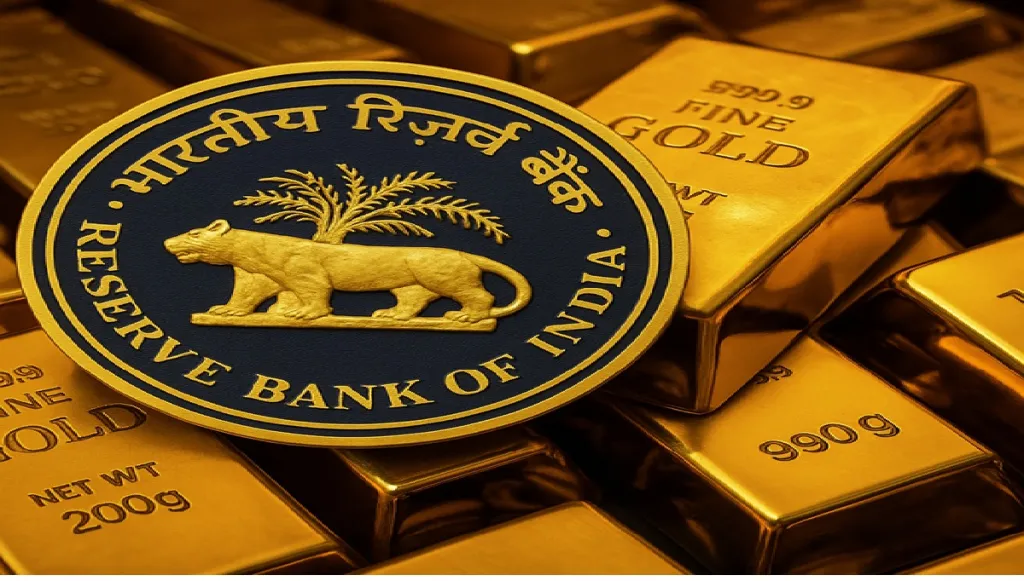The surge in gold prices in the last few years has sparked a general concern among investors — will the government be able to repay the increasing liability on sovereign gold bonds on time? The reason for this concern is that as the price of gold is rising, the total liability of the government is also increasing in the same proportion.
The Narendra Modi government launched the Sovereign Gold Bond (SGB) scheme in November 2015 and discontinued it last year. The scheme’s objective was to curb gold imports and lower the current account deficit in the long run by mobilising the precious metal held by households and institutions. Conceived as a tool to create a cheap debt option, the RBI issued SGBs in denominations of one gram of gold and multiples thereof.
Since November 2015, the RBI has issued 147 tonnes of gold through a total of 67 tranches. The government has raised about Rs 72,000 crore through SGBs.
Gold prices and government liabilities
Since the SGB scheme launch in 2015, gold prices have increased by more than 250% to Rs 9,300 per 1 gram. At the current price, if all the outstanding bonds are redeemed today, the government will have to pay more than Rs 1.2 lakh crore.
This amount may sound large, but when we look at it relative to the total debt liabilities of the Government of India and the annual budget, it is minuscule. As on March 31, 2025, India’s total debt liability (internal debt and other liabilities) stood at Rs 181.74 lakh crore, government data showed. In this, the SGB liability of Rs 1.2 lakh crore is very small.
For FY26, the Government of India has set a total market borrowing target of Rs 14.82 lakh crore, with a plan to raise Rs 8 lakh crore in the first six months alone.
Also read: Sovereign Gold Bonds: How much govt owes to SGB holders for 130 tonnes gold?
Indian govt defaulting on SGBs repayment ‘unlikely’
On safety concerns with regard to SGBs investment, Keval Bhanushali, Co-founder & CEO at 1 Finance, says “SGBs were designed as a secure, gold-linked investment with a 2.5% annual interest, backed by the government. Rising gold prices, now at Rs 9,284 per gram, have driven this liability surge, raising concerns about future payouts, especially by 2032 when all bonds mature. Are these concerns valid? Not entirely.”
SGBs carry a sovereign guarantee, meaning default risk is negligible — governments can raise funds via taxes or borrowing to honor commitments, he said, adding that the RBI’s strategic accumulation of 321 tonnes of gold, yielding $20 billion in gains, further offsets liabilities.
“However, the scheme’s cost has ballooned beyond expectations, prompting its discontinuation in 2024. While investor money remains safe, the fiscal strain could pressure public spending or increase borrowing costs. By 2032, liabilities may multiply, but default is unlikely —India’s economic resilience and RBI’s hedging ensure SGBs remain a secure bet, though not without broader fiscal trade-offs,” Bhanushali added.
Government’s repayment capacity and track record
So far, the government has fully repaid 7 tranches of bonds and has also offered premature redemption for the 8th tranche. SGBs are redeemed as per the prevailing market price. This makes it clear that the Government of India takes the responsibility of these bonds seriously and is making timely payments.
Apart from this, the government has also created a Gold Reserve Fund (GRF) to balance the growing liability. Rs 3,552 crore was deposited in this fund in FY24, which has been increased to Rs 28,605 crore in the revised budget of FY25. This makes it clear that the government has taken adequate security measures for possible redemption.
Also read: Sovereign Gold Bonds: Last chance to redeem THIS SGB tranche prematurely – Check details
Future liabilities and the state of the Indian economy
Certainly, all the bonds are not going to be redeemed at once. The maturity of the last tranche is in 2032. That is, the government will not have to make a lump sum payment, which will give it enough time to plan the payment. However, if gold prices continue to rise like this, the total liability of the government may increase further.
But at the same time, we should not forget that India is a fast-growing economy. The government has set a target of becoming a $5 trillion economy by FY 2029. Also, India’s bond market is worth around USD 2.7 lakh crore, and the size of corporate bonds has reached $600 billion. In such a situation, limited liabilities like SGBs are not expected to have any major impact on the country’s financial stability.
Summing up – Investors need not panic
So is your investment in SGBs safe? As of today, the answer is yes. The payment track record of the Government of India is reliable, the funding structure is strong and measures like the Gold Reserve Fund balance the risk. If you are an investor in SGB, then given the current situation, you do not need to worry about your capital at the moment.

